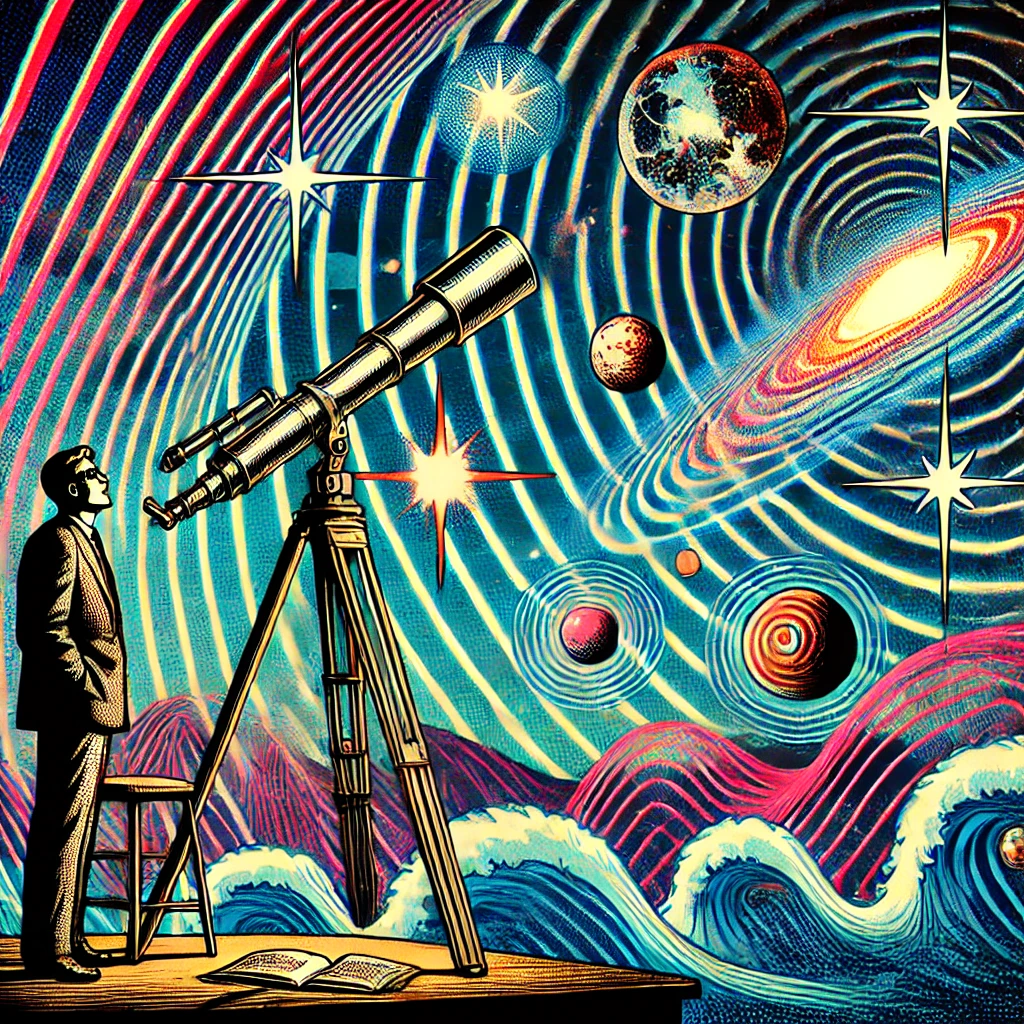Sounds of the Universe Professor Carolin Crawford
In space no-one can hear you scream… but it is still a noisy Universe. We are familiar with the many stunning images of space, but these are only part of the whole human experience. This lecture takes a new approach…
Professor Carolin Crawford is an astrophysicist and public lecturer known for her work in astronomy education and outreach. She holds a Ph.D. in Astronomy from the University of Cambridge and is currently a Fellow of Emmanuel College at the University of Cambridge. Crawford has made significant contributions to the field of astrophysics through her research on topics such as galaxy formation, supermassive black holes, and the large-scale structure of the universe.
In addition to her academic work, Crawford is deeply committed to public engagement and science communication. She has delivered numerous lectures, talks, and presentations on astronomy and cosmology to diverse audiences, ranging from schoolchildren to adult learners. Crawford’s engaging and accessible approach to science communication has made her a popular speaker at public events, science festivals, and media appearances.
Crawford’s contributions to astronomy education and outreach have been recognized with several awards and honors, including the Royal Society’s Kohn Award for Excellence in Engaging the Public with Science. She is also a Fellow of the Royal Astronomical Society and a member of the Institute of Physics.
Overall, Professor Carolin Crawford’s work exemplifies the importance of communicating scientific concepts and discoveries to the public, inspiring curiosity and enthusiasm for astronomy and astrophysics among audiences of all ages and backgrounds.
Professor Carolin Crawford is an eminent astrophysicist and communicator of science, with a particular interest in making the complex and fascinating world of astronomy accessible to the public. While I don’t have real-time data or recent publications from her, it’s plausible that “Sounds of the Universe” could refer to her work or lectures dealing with the concept of sonification of astronomical phenomena or the acoustic properties of space.
Sonification of Astronomical Data
Sonification is the process of converting data into sound. This technique can be particularly useful in astronomy for several reasons:
– Accessibility: It makes astronomical data accessible to people who are visually impaired, allowing them to perceive and understand cosmic phenomena through sound.
– **Data Analysis**: Sonification can help scientists and researchers identify patterns or anomalies in data that might not be immediately obvious through visual inspection alone.
– Public Engagement: Transforming data into sound provides a novel and engaging way to communicate complex astronomical concepts to the public, enhancing science outreach and education.
Potential Topics in “Sounds of the Universe”
If Professor Carolin Crawford were to present a lecture or work titled “Sounds of the Universe,” it might explore several intriguing aspects:
– Cosmic Microwave Background Radiation: Often considered the “echo” of the Big Bang, this radiation fills the universe and provides critical insights into its early state and subsequent expansion. Sonifying this data could offer a unique auditory experience of the universe’s infancy.
– Stellar Oscillations: Stars, including our Sun, exhibit oscillations that can be converted into sound. These “stellar symphonies” can help astronomers study the internal structure and composition of stars.
– Gravitational Waves: Detected from cataclysmic events like black hole mergers, gravitational waves can be sonified to produce sounds that represent the ripples in spacetime they cause. This offers a new way to experience these extraordinary cosmic events.
– Planetary Radio Emissions: Planets and their moons can produce radio waves due to interactions with magnetic fields and solar wind. NASA and other space agencies have converted these signals into audible sounds, providing eerie “soundtracks” of different celestial bodies.
Educational and Scientific Value
Presentations or works focusing on the “Sounds of the Universe” can serve multiple purposes:
– Enhancing Scientific Understanding: They provide a unique perspective on cosmic phenomena, helping to deepen our understanding of the universe’s dynamics.
– Inspiring Curiosity and Wonder: Hearing the universe adds an emotional and experiential dimension to astronomical education, potentially inspiring a deeper interest in science and exploration among audiences of all ages.
Conclusion
While specific details about a project by Professor Carolin Crawford titled “Sounds of the Universe” are not available in my current database, the concept aligns with the broader scientific and educational goals of making astronomy more accessible and engaging. Through the sonification of astronomical data, we can explore the cosmos in a novel way, turning the inaudible into the audible and bringing the sounds of the universe to life.
